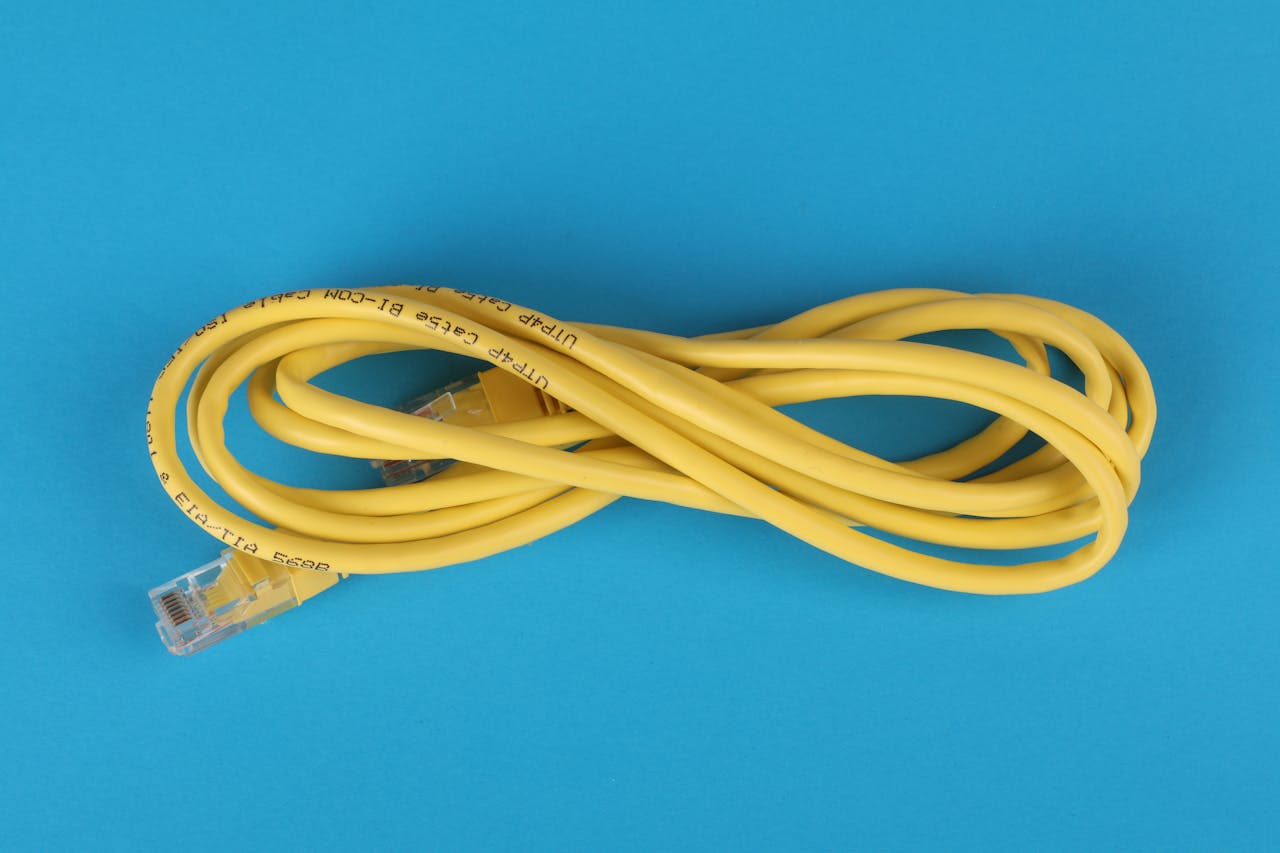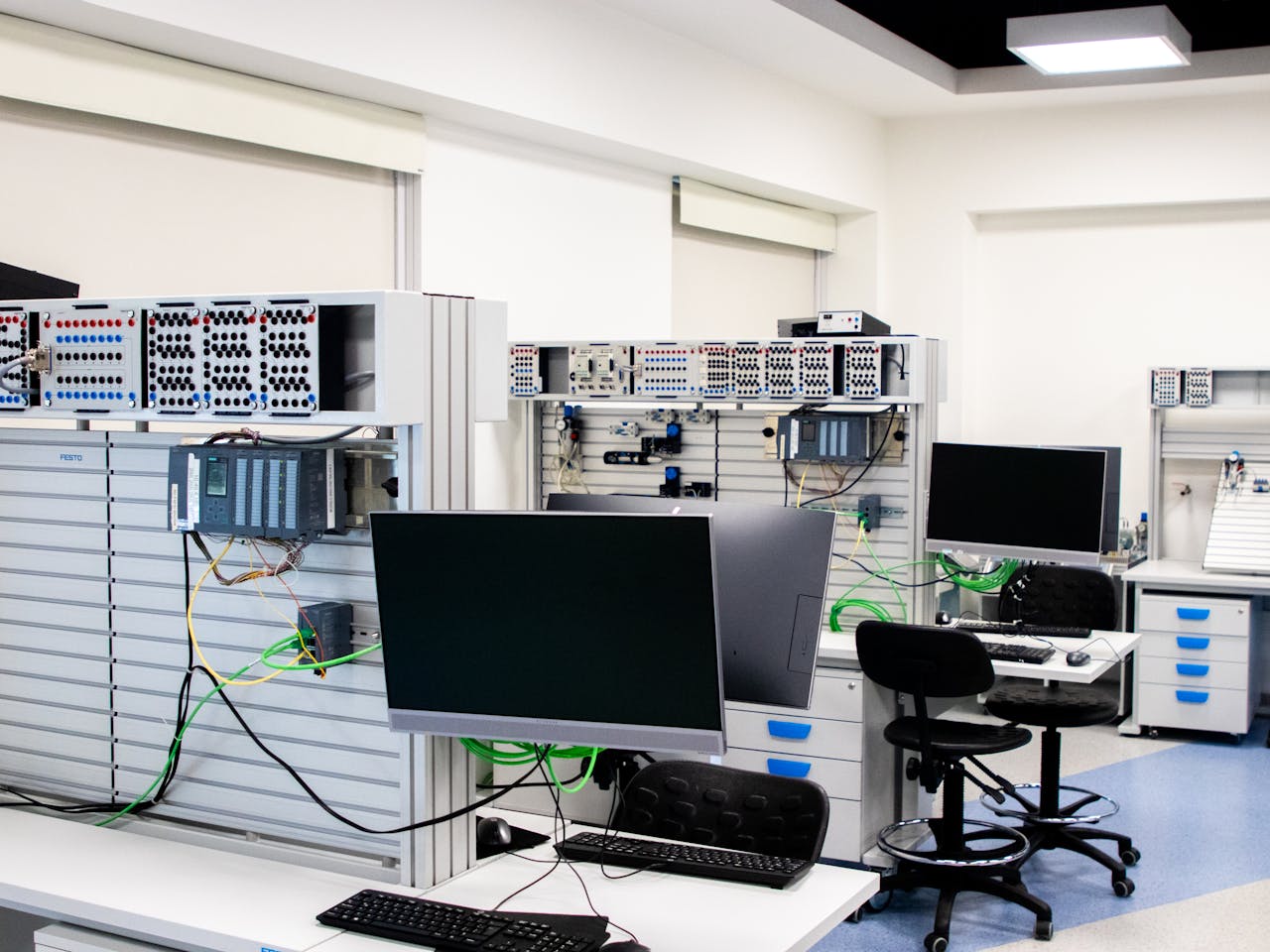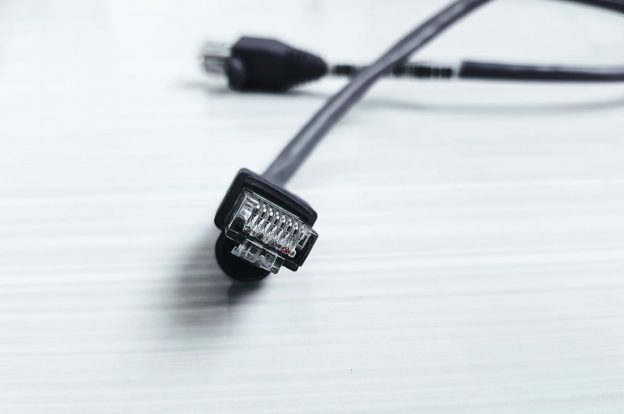Ethernet cables are a vital part of any wired network, connecting devices to ensure fast and reliable internet access. Understanding the different types and their capabilities can help you make the best choice for your needs. This article will guide you through the various categories, factors affecting speed, and tips for maximizing performance.
Key Takeaways
- Ethernet cables come in different categories, each supporting different speeds and bandwidths.
- Cable length, quality, and environmental factors can impact the speed and reliability of your connection.
- Choosing the right cable involves considering your current and future internet speed needs.
- Proper installation and maintenance can enhance the performance and lifespan of your Ethernet cables.
- Advanced technologies like Cat8 cables offer higher speeds and better shielding for demanding applications.
Understanding Ethernet Cable Categories
What Are Ethernet Cable Categories?
Ethernet cable categories, often referred to as Cat followed by a number, indicate the specifications and performance standards of the cables. These categories help users understand the capabilities and limitations of each type of cable. Knowing the category of your Ethernet cable is crucial for ensuring optimal network performance.
Differences Between Cat5, Cat5e, Cat6, and Cat7
- Cat5: This older cable type supports speeds up to 100 Mbps and is suitable for basic home networking.
- Cat5e: An enhanced version of Cat5, Cat5e supports speeds up to 1 Gbps and is more resistant to interference.
- Cat6: Designed for gigabit Ethernet, Cat6 can handle speeds up to 10 Gbps over short distances and offers better performance in high-interference environments.
- Cat7: This cable type supports speeds up to 10 Gbps and features improved shielding to reduce interference, making it ideal for professional and high-speed applications.
How to Identify Your Ethernet Cable Category
Most Ethernet cables have markings that indicate their category. Look for labels such as Cat5, Cat5e, Cat6, or Cat7 printed on the cable jacket. If the category is not listed, it might be an older or lower-quality cable. For modern data networking, you want at least Cat5e. Be highly suspicious if there’s no category listing.
To ensure you’re maximizing the potential of your Ethernet cables, pairing them with a high-speed internet plan is essential.
VMedia offers a range of fast, reliable internet services that perfectly complement modern Ethernet cable technology, whether you’re using Cat5e or the latest Cat8 cables. With VMedia, you can count on consistently fast speeds and stable connections for both work and entertainment.
Upgrade your internet with VMedia’s high-speed plans to get the most out of your Ethernet cables. Click here.
Related: What is a Good Internet Speed? Beginner’s Guide
Factors Affecting Ethernet Cable Speed
Cable Length and Its Impact on Speed
The length of your Ethernet cable can affect its speed. While shorter cables are generally better, the difference is often in nanoseconds. However, if a cable exceeds its specified limit, it can slow down your connection. Always use the appropriate length for your setup to avoid unnecessary issues.
The Role of Cable Quality and Condition
The quality and condition of your Ethernet cable play a crucial role in maintaining optimal speed. Damaged cables, such as those with broken clips or frayed wires, can significantly reduce your connection speed. Regularly check your cables for any signs of wear and tear to ensure they are in good condition.
Environmental Interference and Shielding
Environmental factors like electromagnetic interference (EMI) and radio frequency interference (RFI) can impact your Ethernet cable speed. Shielded cables are designed to minimize these interferences, providing a more stable connection. If you experience frequent speed drops, consider using shielded cables to improve performance.
Choosing the Right Ethernet Cable for Your Needs
Assessing Your Internet Speed Requirements
When selecting an Ethernet cable, the first thing to consider is your internet speed. Make sure the cable supports the speed of your internet connection. For instance, if you have a high-speed plan, you might need a Cat6 or Cat7 cable to handle the data rate effectively. Always check the specifications of your internet plan and match it with the cable’s capabilities.
Considering Future-Proofing
It’s wise to think ahead when buying an Ethernet cable. Technology evolves quickly, and what works today might not be sufficient tomorrow. Opt for a cable that offers higher speeds and better performance than you currently need. This way, you won’t have to replace it soon. Cat7 and Cat8 cables are excellent choices for future-proofing your network.
Balancing Cost and Performance
While it’s tempting to go for the highest-performing cable, it’s essential to balance cost and performance. Cat6 cables are generally more affordable and offer good performance for most home networks. However, if you need top-notch speed and are willing to invest more, Cat7 or Cat8 cables are worth considering. Always weigh the benefits against the cost to make an informed decision.

Common Issues with Ethernet Cables
Ethernet cables are generally reliable, but they can still encounter problems. Here are some common issues you might face and how to address them.
Identifying a Damaged Ethernet Cable
Even though Ethernet cables are sturdy, they can still get damaged, especially if you frequently plug and unplug them. A damaged cable might not stop working entirely but can slow down your connection. For instance, a Cat 7 cable rated at 10 Gbps might only provide 100 Mbps if damaged. Look out for physical damage, such as cuts or severe bends, and avoid running cables through high-traffic areas.
Troubleshooting Slow Connections
If you’re experiencing slow connections, try these steps:
- Check the cable for visible damage.
- Test the cable with a different device or port to rule out device-specific issues.
- Ensure the connectors are clean and not corroded.
- Log in to your router’s interface to check for any settings that might be limiting your connection.
When to Replace Your Ethernet Cable
Knowing when to replace your Ethernet cable is crucial. If you notice consistent slow speeds or intermittent connectivity, it might be time for a new cable. Future-proofing with a Cat 7 or Cat 8 cable can save you from frequent replacements.
Maximizing Ethernet Cable Performance
To get the best performance from your Ethernet cables, it’s important to follow some key practices. Here are some tips to help you maximize your Ethernet cable performance.
Advanced Ethernet Cable Technologies
Introduction to Cat8 Cables
Cat8 cables represent the latest advancement in Ethernet technology. These cables are designed to support extremely high data transmission speeds, making them ideal for data centres and other high-speed, bandwidth-intensive environments. Cat8 cables can support speeds of up to 40Gbps, which is a significant leap from previous generations. The cables achieve this by wrapping each twisted pair in foil, effectively eliminating crosstalk and ensuring a stable connection.
Benefits of Shielded Cables
Shielded cables offer an added layer of protection against external interference. This is particularly important in environments with a lot of electronic noise, such as industrial settings or crowded office spaces. Shielding helps to prevent electromagnetic interference (EMI) and radio frequency interference (RFI), ensuring that your data transmission remains stable and reliable. Shielded cables are especially beneficial for maintaining high-speed connections over longer distances.
Related: Internet Speed Explained: Your Ultimate Guide to Choosing the Right Speed
High-Speed Data Transmission Capabilities
The advancements in Ethernet cable technology have significantly improved data transmission capabilities. Modern cables like Cat8 are designed to handle high-speed data transfers, making them suitable for applications that require rapid data exchange. Whether you’re running a data center or simply need a reliable connection for your home office, these advanced cables offer the performance you need.

Practical Tips for Ethernet Cable Management
Managing Ethernet cables effectively can make a big difference in both performance and aesthetics. Here are some practical tips to help you keep your cables organized and functioning well.
Organizing Your Cables
Keeping your Ethernet cables organized is crucial for both performance and ease of maintenance. Use cable ties or Velcro straps to bundle cables together. This not only makes your setup look cleaner but also helps in identifying and troubleshooting issues quickly. Labeling each cable can save you a lot of time in the long run.
For businesses or homes with extensive wired networks, choosing the right internet provider is just as important as managing your cables. VMedia provides tailored high-speed internet plans designed to support demanding network environments, ensuring you get the most out of your setup. Whether you’re running multiple devices or need reliable speeds for video conferencing, VMedia has the ideal plan to meet your needs.
Discover VMedia’s fast and reliable internet plans, perfect for wired and wireless networks. Learn more.
Avoiding Physical Damage
Physical damage is a common issue that can affect the performance of your Ethernet cables. Avoid running cables through high-traffic areas where they might get stepped on or tripped over. If you need to run cables across the floor, consider using flat cables that are easier to hide under carpets or baseboards. This can help reduce the risk of damage and keep your setup looking neat.
Labeling and Documentation
Proper labelling and documentation are essential for maintaining an organized network. Label both ends of each cable with a unique identifier. Keep a record of these identifiers in a document or spreadsheet.
This will make it easier to manage your network and troubleshoot any issues that arise. Documentation is especially important in larger setups where multiple cables are used.
Managing Ethernet cables can be a hassle, but with a few simple tips, you can keep your workspace tidy and efficient. From using cable ties to labelling each cord, small steps can make a big difference. For more detailed advice and solutions, visit our blog and explore our comprehensive guides.
Conclusion
Understanding Ethernet cable speeds is crucial for optimizing your internet experience. The type of cable you use can significantly impact your connection speed, especially if you have a high-speed internet plan. Always check the category of your Ethernet cable and ensure it matches your internet needs.
For most home users, a CAT 5e or CAT 6 cable will suffice, but if you’re looking for future-proofing or have specific high-speed requirements, consider investing in CAT 6a or higher.
Remember, a good Ethernet cable is just one part of a fast and reliable network. Make sure all your network components are up to date to get the best performance.

